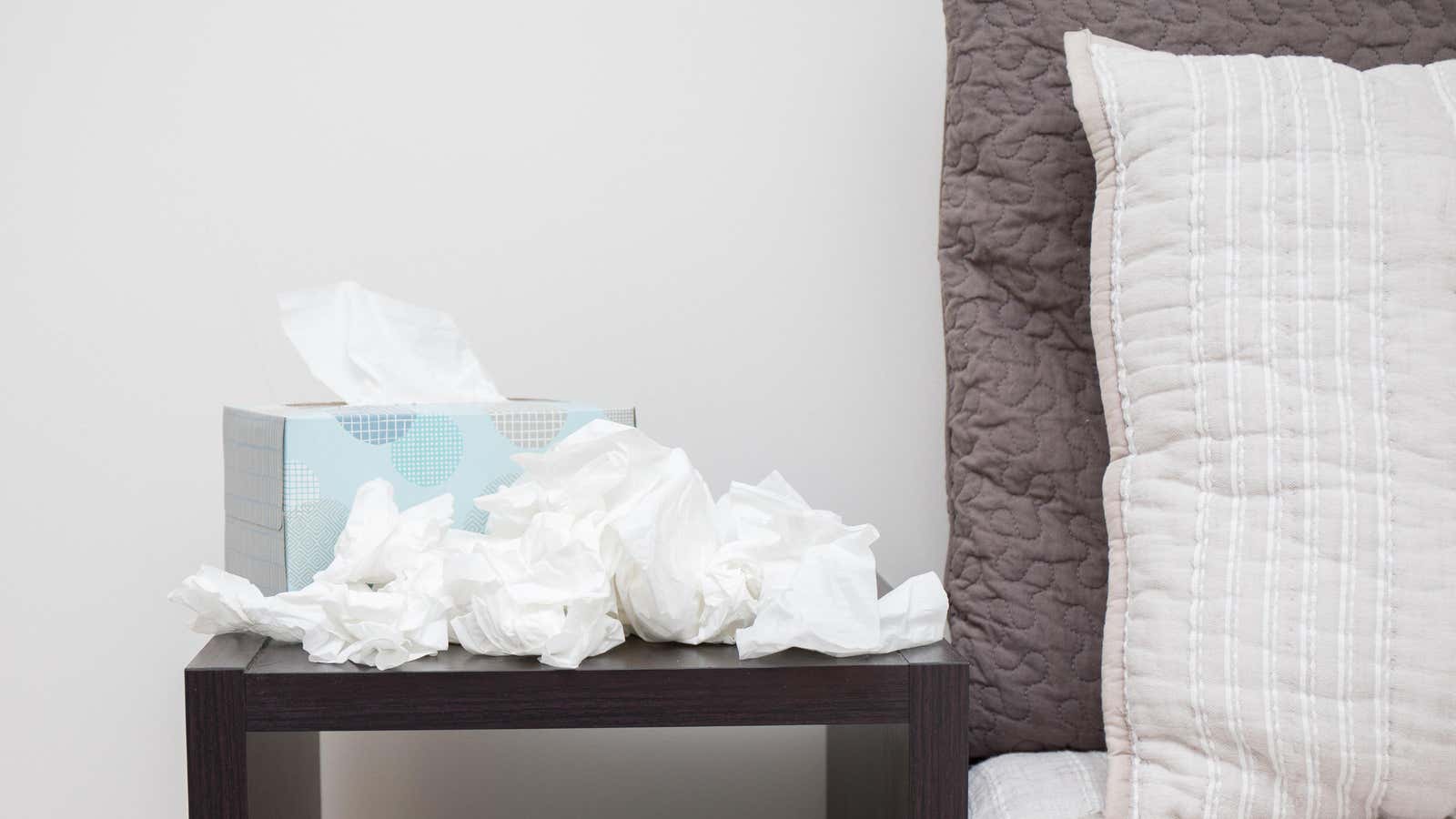What to Clean in the House After Someone Is Sick

When sickness strikes your home, you may not feel like cleaning because you yourself are depressed, or you are caring for a family member who is suffering, or maybe both. Unfortunately, it’s more important than ever to stay on top of your sanitizing game when someone in the house has a virus. But how much cleaning do you really need to do? It can be hard to know where to start, especially if you’re feeling disgusting, so here’s where to start.
Regular cleaning versus disinfection
The Centers for Disease Control and Prevention has a lot of information about cleaning to avoid illness and fight germs if they are present in your premises. Look for household cleaners that contain soap or detergent to remove germs from surfaces and reduce the risk of infection.
Simply spraying surfaces with cleaning products is enough to remove most harmful viruses and bacteria, the CDC says, but if someone is already sick, you should sanitize or disinfect for maximum prevention. The CDC recommends using an EPA-registered disinfectant or bleach solution for this step. The EPA registration list is here . It is important to leave the disinfectant on the surface long enough to actually kill the germs. The disinfectant you choose should have the “exposure time” listed on the label.
Which surfaces to choose
According to Bob Veal , these are the surfaces and rooms to pay attention to when cleaning to avoid disease:
- Bathroom including toilet, faucets and all hard surfaces
- Kitchen, including utensils and cups touched by the patient, as well as handles of drawers and refrigerators, keyboards on appliances and all hard surfaces
- All doorknobs in the house
- Any fabrics that the sick person has touched, including clothes, gowns, towels, soft toys, and bedding (which should be machine washed at the highest temperature)
- All hard surfaces, including light switches, tables, remote controls, and especially anything in the area where the sick person would normally be.
- Electronics such as phones and tablets
- Garbage cans around the house that need to be disinfected
Just in case, throw away your family toothbrushes and replace them with new ones. The same goes for kitchen sponges or any other disposable cleaners you only use for a short time. When cleaning each room, use different rags, sponges, or cleaners to avoid transferring germs from one place to another, says WebMD , which also recommends changing pillowcases daily but leaving the rest of the bedding on until the illness has passed.
How soon do you have to leave when you are sick?
Get out the best you can when you’re sick. Take out the trash and disinfect the bins daily. Wipe surfaces and try to keep a supply of clean linen. The sooner you rid your home of germs that cling to your things, the better.
According to the CDC , the flu virus can live – and potentially infect others – for up to 48 hours after it’s left on a surface. (It only lives on a person’s hands for three to five minutes, which is more comforting but still worrying.) Norovirus, which can cause stomach bugs, can even persist for weeks , according to WebMD . To reduce the chance of someone else getting sick, it’s important to start the disinfection process as soon as the first person gets sick.